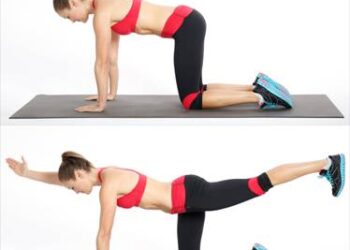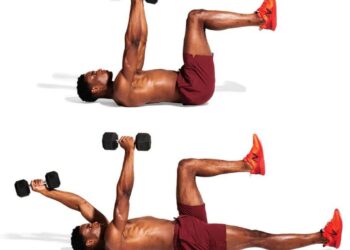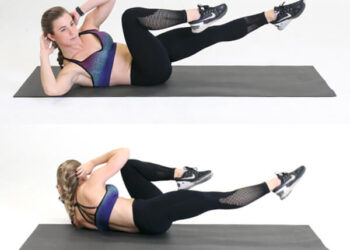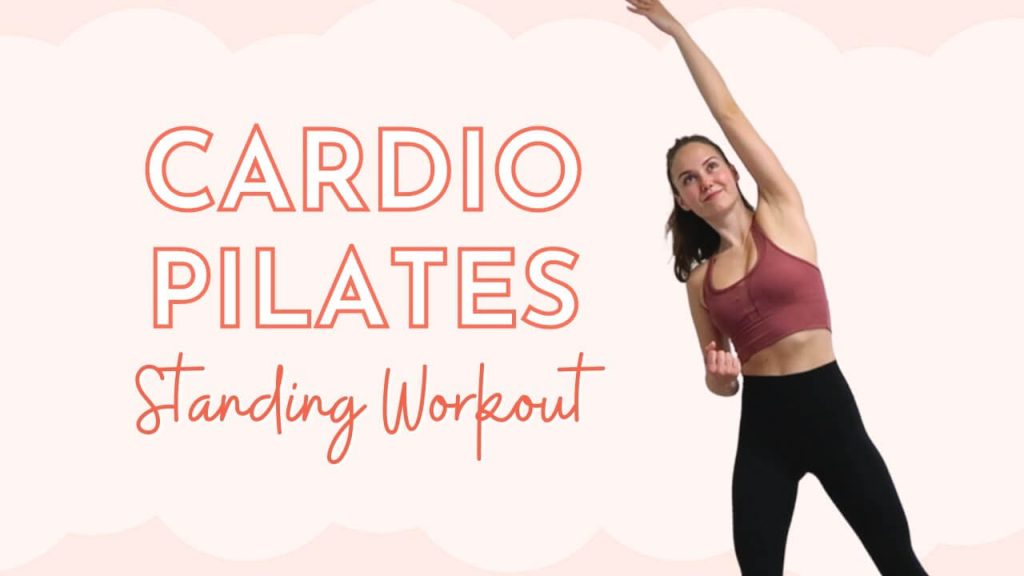
When it comes to exercising, combining various methods can bring the best benefits to the body. Combining Pilates and Cardio is an excellent way to improve overall health, enhance strength, flexibility, and boost cardiovascular fitness. Here is a detailed guide on how to execute this workout formula.
I. Benefits of combining Pilates and Cardio:
1. Pilates:
- Enhancing core strength: Pilates exercises concentrate on engaging the core muscles, including abdominal, back, hips, and glutes. This helps improve core strength and body stability.
- Improving flexibility: Pilates movements aid in stretching and enhancing muscle flexibility, improving the range of motion and reducing the risk of injury.
- Enhancing body awareness: Pilates not only offers physical benefits but also focuses on enhancing body awareness, improving mindfulness, and control during workouts.
2. Cardio:
- Improving cardiovascular health: Cardio exercises like running, jumping rope, or cycling enhance cardiovascular health, boosting blood circulation and improving heart resilience.
- Calorie and fat burning: Effective Cardio activities help burn calories and excess fat, aiding in weight maintenance or weight loss.
- Boosting endurance and energy: Regular Cardio training enhances endurance and increases energy supply to the body.
When combining Pilates and Cardio, the fusion of core strength, flexibility, and stability from Pilates along with cardiovascular health, calorie burning, and endurance from Cardio creates a comprehensive workout plan that enhances overall health and promotes balanced body development.
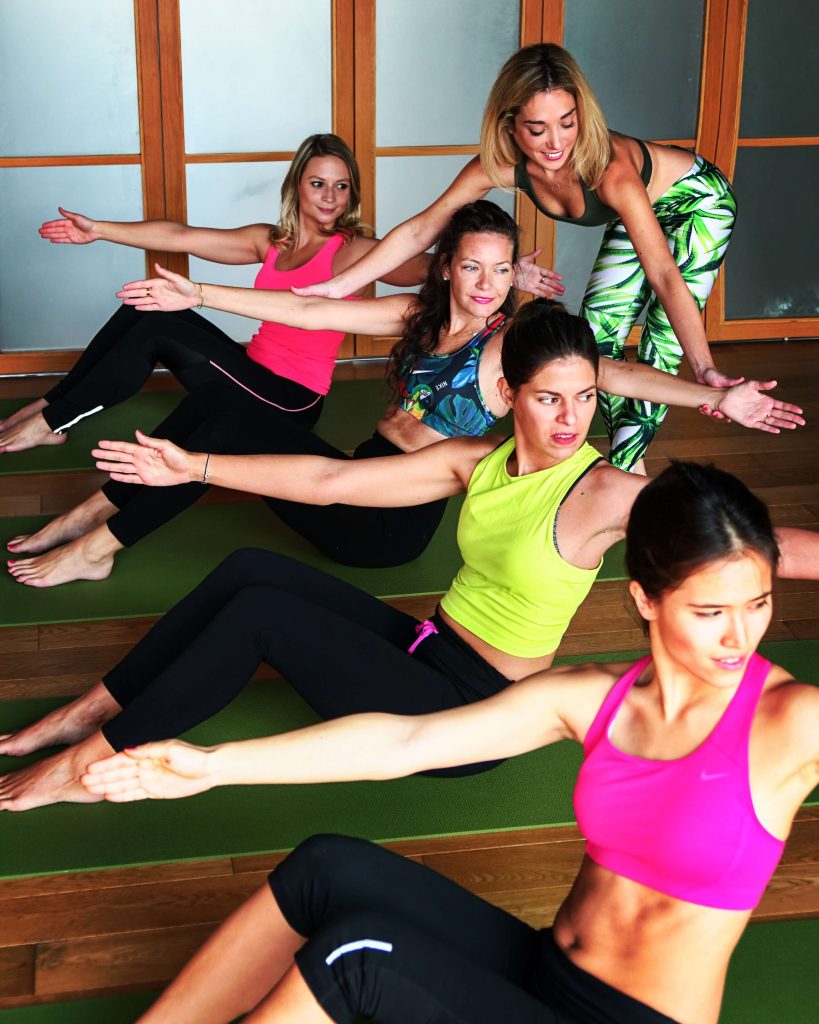
II. Combined Pilates and Cardio Workout Plan:
1. Start with Pilates:
Pilates serves as an exceptional foundation for a workout routine due to its focus on core strength, flexibility, and mindful movements. Initiating your workout session with Pilates sets the tone by activating core muscles, enhancing body awareness, and preparing the body for subsequent physical exertion.
a. Warm-up with Pilates:
- Fundamental Pilates exercises: Begin the workout with exercises such as “The Hundred,” “The Roll-Up,” and “The Swan Dive.” “The Hundred” involves controlled breathing paired with arm movements to activate core muscles and promote circulation. “The Roll-Up” focuses on spinal articulation and core engagement, while “The Swan Dive” enhances spinal extension and strengthens the back.
- Activation of core muscles: These initial movements concentrate on engaging muscles in the abdomen, back, hips, and glutes – the core muscles. By activating these crucial muscle groups, Pilates creates a foundation for stability and support during subsequent exercises.
- Mindful movements and breathing: Pilates emphasizes controlled, deliberate movements aligned with proper breathing techniques. This mindful approach helps improve focus, coordination, and the mind-body connection.
b. Focus on form and breathing:
- Correct posture and alignment: Pilates encourages proper body alignment, emphasizing a neutral spine, relaxed shoulders, and engaged core muscles. By maintaining correct posture, individuals minimize the risk of injury and optimize the effectiveness of exercises.
- Controlled breathing techniques: The coordination of movement with breath is integral to Pilates. Emphasizing controlled inhalation and exhalation patterns aids in enhancing oxygen flow, muscle engagement, and overall relaxation.
c. Benefits of starting with Pilates:
- Core activation and stability: The core muscles, encompassing the abdominals, lower back, hips, and pelvic floor, serve as the powerhouse of the body. By engaging these muscles at the outset, Pilates establishes a strong foundation for stability, balance, and posture.
- Enhanced body awareness: Pilates encourages practitioners to be mindful of their body positioning, alignment, and movement patterns. This heightened body awareness helps individuals identify and correct imbalances, promoting better posture and movement efficiency.
- Preparation for further exertion: Starting the workout routine with Pilates primes the body for subsequent exercises by activating key muscle groups, increasing blood circulation, and promoting a focused mindset.
- Injury prevention and muscle engagement: Pilates’ focus on controlled, precise movements aids in building strength while reducing the risk of strain or injury. It targets specific muscle groups effectively, aiding in their engagement and endurance.
2. Transition to Cardio:
Transitioning from Pilates to Cardio exercises is a crucial phase in the combined workout routine. It involves engaging in cardiovascular activities that elevate heart rate, increase calorie expenditure, and enhance overall endurance.
a. Cardiovascular activities:
- Choice of exercises: Upon completing the Pilates segment, individuals transition to various Cardio exercises. Common options include:
- Running: An excellent full-body workout that enhances cardiovascular health and burns calories effectively.
- Cycling: A low-impact activity that targets lower body muscles while providing an excellent cardiovascular workout.
- Jumping rope: A simple yet effective exercise that elevates heart rate, enhances agility, and burns calories efficiently.
- Dance aerobics or HIIT: Engaging in dance-based workouts or High-Intensity Interval Training (HIIT) sessions offers variety and helps in achieving cardiovascular benefits in a shorter timeframe.
- Elevating heart rate: Cardio exercises focus on increasing heart rate and breathing rate, effectively challenging the cardiovascular system. This elevation in heart rate aids in better oxygen circulation throughout the body, promoting endurance and stamina.
b. High-Intensity Interval Training (HIIT):
- Workout structure: HIIT involves alternating between short bursts of high-intensity exercises followed by brief recovery periods or lower-intensity activities. For instance, a 30-second sprint followed by a 30-second slow jog or walk.
- Benefits of HIIT: Incorporating HIIT into the routine offers numerous advantages, including:
- Increased calorie burn: HIIT is known for its effectiveness in burning calories both during and after the workout due to the elevated metabolic rate post-exercise (EPOC).
- Time efficiency: HIIT sessions, often shorter in duration compared to steady-state Cardio, offer similar or even greater benefits in terms of cardiovascular health and calorie expenditure.
- Improved cardiovascular fitness: HIIT enhances cardiovascular health by improving heart function, lowering blood pressure, and increasing oxygen uptake.
c. Key considerations during transition:
- Gradual transition: Moving from Pilates to Cardio should involve a gradual transition to allow the body to adjust to increased intensity. Begin with moderate-intensity Cardio before progressing to more vigorous exercises.
- Proper warm-up: Before engaging in high-intensity Cardio, it’s crucial to perform a warm-up routine that includes dynamic stretches and light Cardio exercises to prepare the body for exertion and reduce injury risks.
- Cool-down after Cardio: After completing the Cardio segment, a proper cool-down is essential. This involves gradually decreasing the intensity of exercises to lower heart rate and prevent post-exercise muscle soreness.
- Hydration and fuel: Maintaining proper hydration and fueling the body with adequate nutrients before and after Cardio workouts is vital for energy levels and recovery.
d. Advantages of transitioning to Cardio:
- Calorie burning and weight management: Cardio exercises are effective in burning calories, aiding in weight management and fat loss when combined with a balanced diet.
- Improved cardiovascular health: Engaging in regular Cardio workouts enhances heart health, reduces the risk of cardiovascular diseases, and boosts overall fitness levels.
- Enhanced endurance and stamina: Cardiovascular exercises enhance endurance, allowing individuals to sustain physical activities for more extended periods without fatigue.
3. Integrating Pilates into Cardio:
Integrating Pilates exercises into a Cardio routine post-Cardio workout segment is beneficial for muscle recovery, flexibility enhancement, and overall body balance. This integration ensures that the benefits derived from Pilates, such as core engagement and flexibility, complement the cardiovascular advantages gained from the preceding Cardio exercises.
a. Post-Cardio Pilates routine:
- Focus on stretching and recovery: Pilates exercises performed after a Cardio session often emphasize stretches and movements that promote muscle recovery and relaxation. These stretches can target major muscle groups, including hamstrings, quadriceps, calves, and back muscles.
- Emphasis on flexibility: The inclusion of Pilates stretches helps in maintaining and improving flexibility, which is crucial after engaging in Cardio activities that may tighten muscles and reduce flexibility.
- Core stabilization: Pilates exercises post-Cardio focus on engaging the core muscles, aiding in stabilization and support after the intense cardiovascular workout. These exercises may include variations of planks, abdominal exercises, or controlled movements targeting the core.
b. Benefits of integrating Pilates into Cardio:
- Muscle recovery: Post-Cardio Pilates helps in alleviating muscle soreness, reducing stiffness, and promoting blood circulation, aiding in faster recovery after intense Cardio exercises.
- Enhanced flexibility: Pilates stretches enhance muscle flexibility, counteracting the tightening effects often experienced after Cardio workouts. Improved flexibility reduces the risk of injury and supports better range of motion in subsequent exercises.
- Improved body balance: Pilates emphasizes balance and stability through controlled movements, which complements the dynamic nature of Cardio exercises. This integration aids in enhancing overall body balance and coordination.
- Core strengthening and engagement: Pilates exercises focus on the activation and strengthening of core muscles, which can become engaged and fatigued during Cardio activities. Strengthening the core promotes better posture, stability, and injury prevention.
c. Proper execution of Pilates post-Cardio:
- Mindful execution: Similar to the Pilates warm-up phase, emphasis should be placed on controlled movements, proper form, and mindful breathing during the post-Cardio Pilates routine.
- Variety in exercises: Introduce a variety of Pilates exercises that complement the Cardio routine, incorporating stretches, core-strengthening exercises, and movements that target specific muscle groups engaged during the Cardio segment.
- Relaxation techniques: Incorporate relaxation techniques such as deep breathing and stretching into the post-Cardio Pilates routine to promote muscle relaxation, reduce tension, and aid in mental relaxation after an intense workout.
d. Advantages of integrating Pilates into Cardio routine:
- Improved recovery: Pilates exercises aid in quicker muscle recovery post-Cardio, reducing muscle soreness and fatigue.
- Enhanced flexibility and range of motion: Incorporating Pilates stretches counteracts muscle tightness resulting from Cardio exercises, promoting better flexibility and increased range of motion.
- Strengthened core and stability: Pilates’ focus on core engagement complements the dynamic movements of Cardio workouts, fostering better core strength, stability, and overall body control.
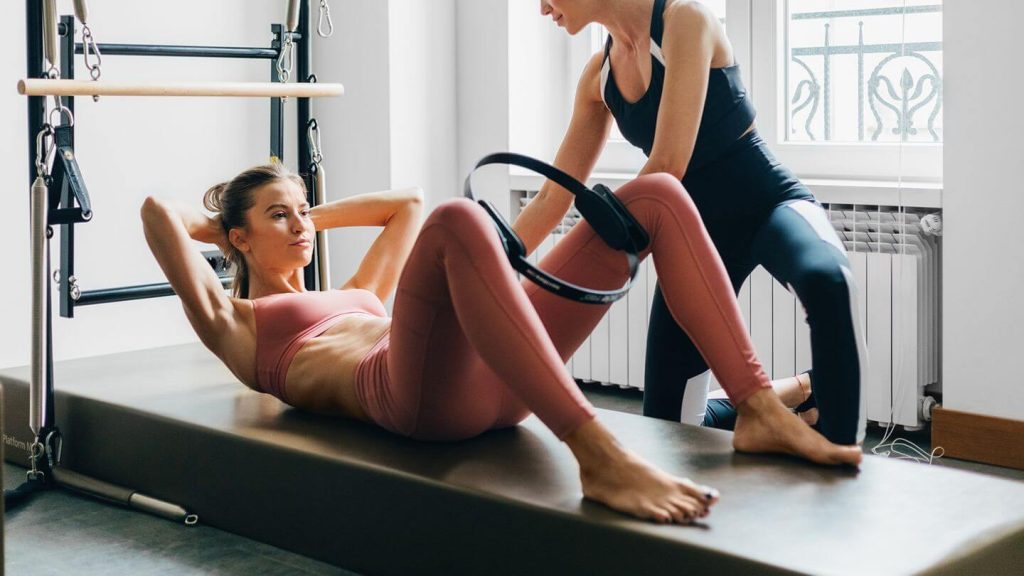
4. Cool-down and Stretch:
The cool-down phase marks the conclusion of the combined Pilates and Cardio workout routine. This segment involves gradually decreasing exercise intensity and incorporating stretching exercises. Cool-downs play a pivotal role in facilitating muscle recovery, preventing injury, and promoting flexibility after an intense workout session.
a. Importance of Cool-down:
- Gradual reduction of heart rate: The cool-down period allows the heart rate to gradually decrease, preventing abrupt changes in blood flow and aiding the body in returning to its pre-exercise state.
- Muscle relaxation: After the physical exertion of both Pilates and Cardio, a cool-down session helps muscles relax, reducing the risk of post-exercise soreness and stiffness.
- Promoting flexibility: Incorporating stretching exercises during the cool-down helps maintain and enhance flexibility by targeting muscles that may have tightened during the workout.
b. Elements of an Effective Cool-down:
- Light Cardio transition: A transition from high-intensity Cardio to low-intensity exercises like brisk walking or slow cycling serves as a bridge between intense workouts and the cool-down phase.
- Stretching exercises: Focus on static stretches that target major muscle groups used during the workout. This includes stretches for the legs, back, arms, and core muscles. Hold each stretch for about 20-30 seconds without bouncing, promoting muscle relaxation and elongation.
- Breathing and relaxation: Incorporating deep breathing exercises during stretches aids in relaxation and stress reduction, allowing the body to ease into a state of recovery.
c. Benefits of Cool-down and Stretch:
- Reduced muscle soreness: Cooling down and stretching after exercise helps in minimizing muscle soreness and stiffness, improving recovery and readiness for subsequent workouts.
- Enhanced flexibility: Stretching exercises during the cool-down phase contribute to maintaining and improving flexibility, crucial for overall joint mobility and preventing injury.
- Improved circulation: Gentle exercises during the cool-down maintain blood circulation, preventing blood pooling in the muscles and aiding in the removal of waste products generated during exercise.
d. Tips for an Effective Cool-down Routine:
- Incorporate variety: Include a variety of stretching exercises targeting different muscle groups to ensure comprehensive muscle recovery and flexibility enhancement.
- Mind-body relaxation: Focus on mindfulness and relaxation techniques during stretching exercises, emphasizing proper breathing and releasing tension in the muscles.
- Proper hydration: Rehydrate the body post-exercise to replenish fluids lost during the workout, supporting recovery and preventing dehydration.
- Listen to your body: Pay attention to how your body feels during the cool-down. If certain muscles feel tight or fatigued, adjust your stretches accordingly.
e. Post-Cool-down Considerations:
- Hydration and nutrition: After completing the cool-down, it’s essential to consume adequate fluids and a balanced meal to replenish energy stores and support muscle recovery.
- Rest and recovery: Allow the body sufficient time for rest and recovery between workouts. Adequate sleep and rest play a critical role in the body’s healing and adaptation process.
- Reflection and adjustment: Reflect on the workout session, noting what worked well and areas that may need improvement. Use this feedback to adjust future workout plans accordingly.
5. Important Considerations:
Understanding and implementing key considerations in a combined Pilates and Cardio workout routine is crucial for maximizing effectiveness, preventing injury, and maintaining overall health and fitness. These considerations encompass aspects such as consistency, progression, rest, hydration, and nutrition.
a. Consistency in Training:
- Regular workout schedule: Maintaining a consistent workout routine, incorporating both Pilates and Cardio sessions, ensures steady progress and reaps long-term benefits.
- Frequency and duration: Aim for a balanced distribution of Pilates and Cardio workouts throughout the week. A frequency of 3-5 sessions per week, depending on fitness levels and recovery capacity, is generally recommended.
- Adherence to routine: Consistency in adhering to the workout schedule enhances discipline, reinforces habit formation, and fosters better results over time.
b. Progression in Workouts:
- Gradual intensity increase: As fitness levels improve, gradually increase the intensity and duration of workouts. This progression challenges the body and promotes continuous improvement.
- Variation and challenge: Introduce variations in exercises, increase resistance, or modify workout formats to prevent plateaus and maintain motivation.
- Listening to the body: Pay attention to physical cues and signals from the body. Allow for adjustments in workout intensity or duration based on individual energy levels, soreness, or fatigue.
c. Rest and Recovery:
- Importance of rest days: Schedule rest days within the workout regimen to allow the body to recover and repair muscle tissues.
- Quality sleep: Adequate sleep is crucial for muscle recovery, hormone regulation, and overall well-being. Aim for 7-9 hours of quality sleep per night.
- Active recovery: Engage in light activities like walking, yoga, or gentle stretching on rest days to promote blood circulation and muscle relaxation without causing additional stress to the body.
d. Hydration and Nutrition:
- Hydration before, during, and after workouts: Maintain proper hydration levels by drinking water before, during, and after exercise sessions to support bodily functions and prevent dehydration.
- Balanced nutrition: Fuel the body with a balanced diet rich in lean proteins, complex carbohydrates, healthy fats, vitamins, and minerals. This supports energy levels, muscle recovery, and overall health.
- Post-workout nutrition: Consume a combination of protein and carbohydrates post-workout to aid in muscle repair and glycogen replenishment. Opt for foods like lean meats, whole grains, fruits, and vegetables.
e. Mindfulness and Mental Well-being:
- Mind-body connection: Foster a mind-body connection during workouts, emphasizing mindfulness, focused breathing, and being present in the moment.
- Stress management: Incorporate stress-relieving activities like meditation, deep breathing exercises, or yoga to promote mental well-being and reduce stress levels.
- Enjoyment and balance: Find enjoyment in workouts by choosing activities that align with personal interests and goals. Maintain a balanced approach to fitness, avoiding excessive strain or pressure.
f. Safety and Injury Prevention:
- Proper technique: Emphasize proper form and technique during exercises to prevent injuries and maximize effectiveness.
- Warm-up and cool-down: Always perform warm-up and cool-down routines before and after workouts to prepare the body and aid in muscle recovery, respectively.
- Listening to warning signs: Pay attention to warning signs such as persistent pain, discomfort, or fatigue. Consult a fitness professional or healthcare provider if experiencing unusual symptoms.
g. Monitoring and Adjustments:
- Progress tracking: Monitor progress by keeping records of workouts, assessing improvements in strength, endurance, and flexibility over time.
- Adaptation and adjustments: Based on progress and feedback, adapt workout routines by making necessary adjustments to optimize effectiveness and prevent monotony.
- Seeking guidance: Consult fitness professionals or trainers for guidance, personalized advice, and modifications in workouts according to individual needs and goals.
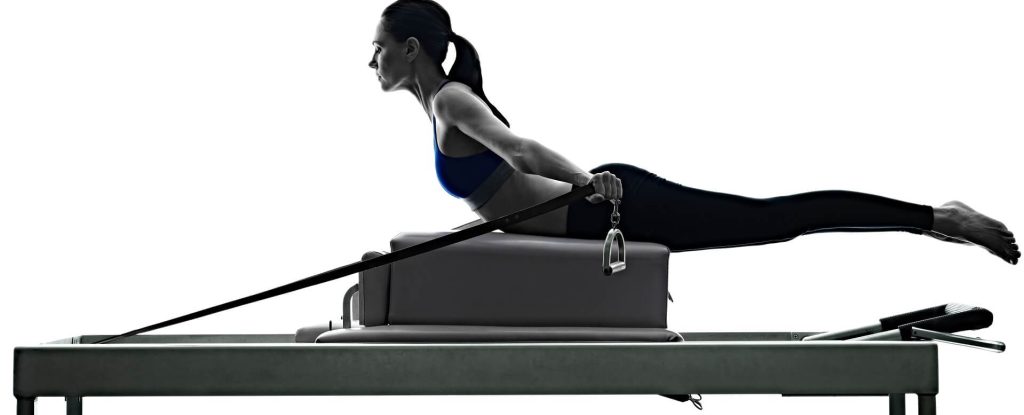
III. Important Notes:
Combined Pilates and Cardio workout plan outlines essential considerations crucial for understanding, implementing, and maximizing the effectiveness of the fitness regimen. These notes encompass aspects related to workout structure, variations, injury prevention, and lifestyle adjustments.
a. Balanced Workout Structure:
- Balancing Pilates and Cardio: Strive for a balanced approach by incorporating both Pilates and Cardio exercises in a complementary manner. Balance the number of sessions per week for each workout type based on individual fitness goals and preferences.
- Integration in routines: Integrate Pilates and Cardio sessions strategically, allowing for adequate rest between intense workouts to prevent overexertion and support recovery.
b. Variations and Progression:
- Exercise variations: Incorporate a diverse range of Pilates and Cardio exercises to target various muscle groups and prevent workout plateaus.
- Progressive overload: Gradually increase the intensity, duration, or complexity of exercises over time to challenge the body and promote continuous improvement.
c. Injury Prevention and Safety Measures:
- Proper form and technique: Emphasize the importance of correct form and technique during exercises to reduce the risk of injuries and maximize effectiveness.
- Warm-up and cool-down: Prioritize thorough warm-up and cool-down routines to prepare the body for exercise and aid in muscle recovery post-workout.
- Listening to the body: Encourage individuals to listen to their bodies, recognizing signs of fatigue, discomfort, or pain, and adjusting workouts accordingly.
d. Lifestyle Adjustments and Mindfulness:
- Consistency in lifestyle: Highlight the significance of adopting a consistent and holistic approach to health, including adequate sleep, stress management, and healthy nutrition.
- Mind-body connection: Stress the importance of mindfulness during workouts, focusing on breath control, mental presence, and the mind-body connection.
e. Importance of Professional Guidance:
- Consultation with experts: Encourage seeking advice from fitness professionals or certified trainers for personalized guidance, exercise modifications, and optimal workout planning.
- Individualized approach: Emphasize the need for individualized fitness plans tailored to specific goals, fitness levels, and any underlying health conditions.
f. Adaptation and Personalization:
- Adapting to personal needs: Encourage individuals to adapt the workout plan to their personal preferences, schedules, and physical limitations.
- Flexibility in routines: Stress the importance of maintaining flexibility in the workout routine to accommodate changes in lifestyle or fitness goals.
g. Setting Realistic Goals:
- Setting achievable targets: Encourage setting realistic and achievable fitness goals based on individual capabilities and progress tracking.
- Celebrating milestones: Celebrate small victories and milestones reached along the fitness journey to maintain motivation and a positive mindset.
h. Continuous Learning and Evaluation:
- Continuous education: Promote ongoing learning about fitness, exercises, and health-related topics to stay informed and make informed decisions.
- Regular assessment: Periodically assess progress, reassess goals, and make necessary adjustments to the workout plan for continual improvement.
i. Lifestyle Integration and Long-term Commitment:
- Incorporating fitness into daily life: Encourage integrating fitness habits into daily routines, making exercise a sustainable and enjoyable part of life.
- Long-term commitment: Stress the importance of long-term commitment to fitness, recognizing that consistency and dedication yield lasting results.

Source: Admin compiled from the Internet




